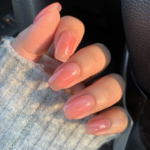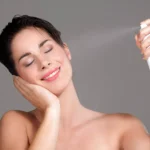If you’re considering lip fillers, one of the most common questions you might have is “how long do lip fillers last?” The answer to this question can vary depending on a variety of factors, but in general, lip fillers can last anywhere from six months to two years. In this article, we’ll take a closer look at some of the things that can impact how long your lip fillers will last and what you can expect during the process.
What Are Lip Fillers?
Before we dive into how long lip fillers last, let’s first define what they are. Lip fillers are a type of cosmetic injectable that is designed to add volume and shape to the lips. They are typically made of hyaluronic acid, which is a natural substance found in the body that helps to hydrate and plump the skin. By injecting this substance into the lips, cosmetic professionals can create a fuller, more defined appearance that can help to enhance your overall facial features.

Factors That Impact How Long Lip Fillers Last
Now that you know what lip fillers are, let’s take a look at some of the factors that can impact how long they last:
Type of Filler Used
There are several different types of lip fillers available on the market, and each one has its own unique properties that can impact how long it lasts. Some fillers, like Juvederm or Restylane, are made with a thicker gel consistency that can last up to a year or more. Other fillers, like Belotero or Volbella, are made with a thinner consistency and may only last six months to a year.
Amount of Filler Injected
The amount of filler that is injected into your lips can also impact how long it lasts. If you get a small amount of filler injected, it will likely metabolize more quickly and won’t last as long. However, if you get a larger amount of filler injected, it may take longer to break down and can last for up to two years.
Metabolism
Your body’s metabolism can also impact how long lip fillers last. If you have a faster metabolism, the filler may break down more quickly and not last as long. Conversely, if you have a slower metabolism, the filler may last longer in your system.
Lifestyle Factors
Finally, lifestyle factors like smoking, sun exposure, and stress can also impact how long lip fillers last. Smoking can cause the filler to break down more quickly, while sun exposure can cause it to degrade faster. Stress can also impact how long the filler lasts by causing your body to metabolize it more quickly.
Different Types of Fillers and How Long They Last
Hyaluronic acid fillers are the most common type of filler. They are made of a substance that is naturally found in the body, so they are generally well-tolerated. Hyaluronic acid fillers can be used to smooth wrinkles, add volume to the lips, and correct facial asymmetry. They typically last for 6-12 months.
Radiesse is a filler made of calcium hydroxylapatite. It is a longer-lasting filler than hyaluronic acid, and it can last for up to 2 years. Radiesse is often used to correct deep wrinkles, add volume to the cheeks, and define the jawline.
Sculptra is a filler that stimulates the body to produce its own collagen. This makes it a longer-lasting filler than hyaluronic acid or Radiesse, and it can last for up to 5 years. Sculptra is often used to treat facial wrinkles, improve the appearance of scars, and restore volume to the face.
Other types of fillers include polylactic acid (PLA) and polymethylmethacrylate (PMMA). These fillers are not as common as hyaluronic acid, Radiesse, or Sculptra, but they can last for several years.
The exact length of time that a filler lasts will vary depending on the type of filler, the area of the face where it is injected, and the individual’s metabolism. However, in general, most fillers will last for 6-12 months.
What to Expect During the Lip Filler Process
Now that you know what factors can impact how long lip fillers last, let’s talk about what you can expect during the actual process of getting lip fillers. Here are the basic steps:
- Consultation: You’ll meet with a cosmetic professional to discuss your goals and determine the best type of filler for your needs.
- Preparation: Your lips will be cleaned and numbed with a topical anesthetic to help minimize any discomfort.
- Injection: The filler will be injected into your lips using a small needle. The amount of filler used will depend on your individual goals and the recommendations of your provider.
- Recovery: You may experience some swelling and bruising after the procedure, but this should subside within a few days.
- Results: You should start to see the results of your lip fillers within a few days to a week, and they should continue to improve over time.
Conclusion
If you’re considering lip fillers, it’s important to understand how long they last and what factors can impact their longevity. By working with a qualified and experienced provider, you can ensure that you get the best results possible while also minimizing any potential risks or complications. Remember to discuss your goals and concerns with your provider during your consultation so that they can recommend the best type of filler for your needs.
FAQs
- Are lip fillers safe? Yes, lip fillers are generally considered safe when administered by a qualified and experienced professional.
- Does getting lip fillers hurt? You may feel some discomfort during the injection process, but most people find that it is tolerable with the help of topical numbing cream.
- How long does it take to recover from lip fillers? Most people experience some swelling and bruising for a few days after the procedure, but you should be able to resume normal activities immediately.
- How much do lip fillers cost? The cost of lip fillers can vary depending on the type of filler used, the amount of filler needed, and the experience level of your provider.
- Can I have an allergic reaction to lip fillers? It is possible to have an allergic reaction to lip fillers, but this is rare. Be sure to discuss any allergies or sensitivities with your provider before getting the procedure.






